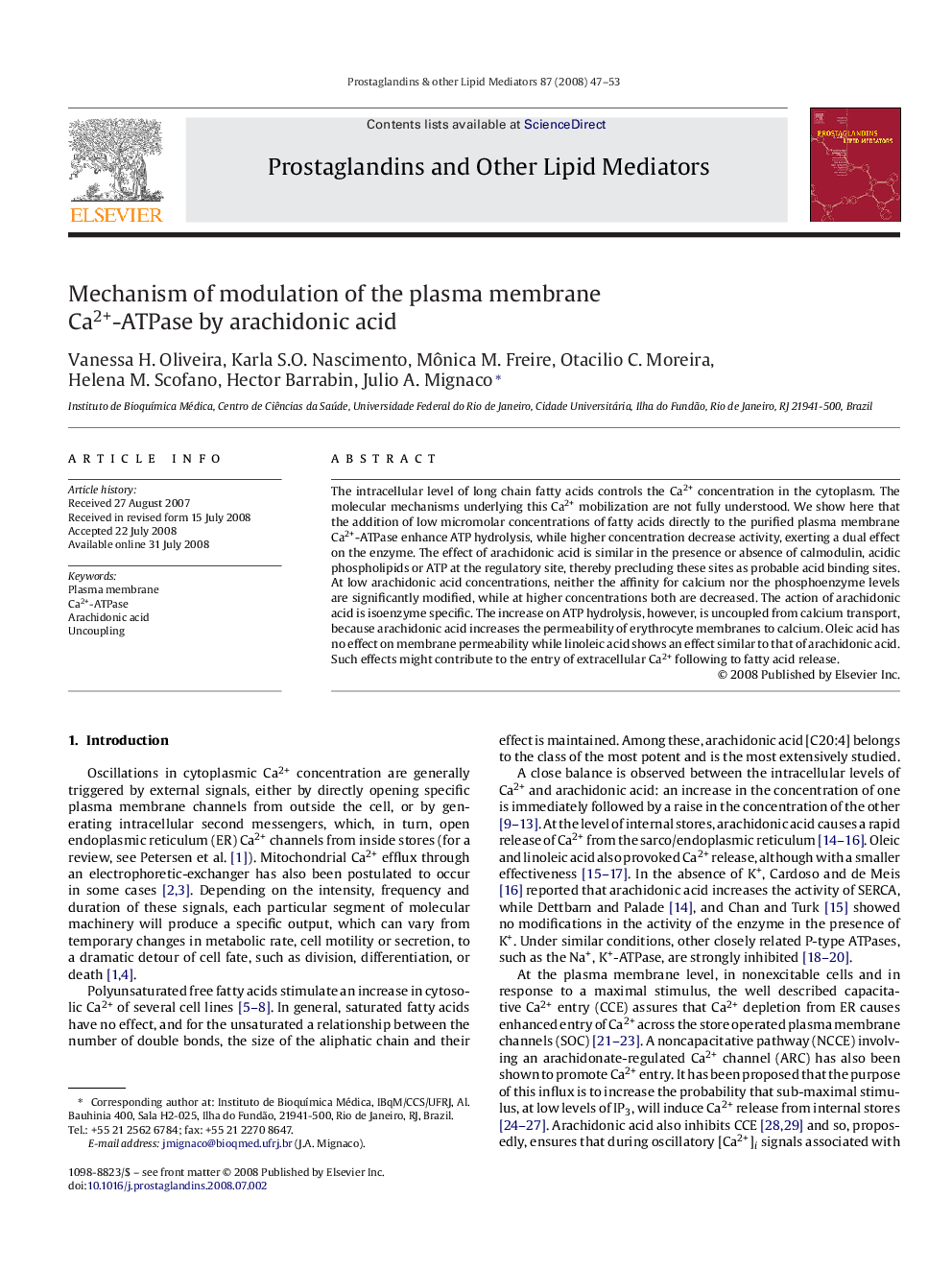| Article ID | Journal | Published Year | Pages | File Type |
|---|---|---|---|---|
| 2019797 | Prostaglandins & Other Lipid Mediators | 2008 | 7 Pages |
Abstract
The intracellular level of long chain fatty acids controls the Ca2+ concentration in the cytoplasm. The molecular mechanisms underlying this Ca2+ mobilization are not fully understood. We show here that the addition of low micromolar concentrations of fatty acids directly to the purified plasma membrane Ca2+-ATPase enhance ATP hydrolysis, while higher concentration decrease activity, exerting a dual effect on the enzyme. The effect of arachidonic acid is similar in the presence or absence of calmodulin, acidic phospholipids or ATP at the regulatory site, thereby precluding these sites as probable acid binding sites. At low arachidonic acid concentrations, neither the affinity for calcium nor the phosphoenzyme levels are significantly modified, while at higher concentrations both are decreased. The action of arachidonic acid is isoenzyme specific. The increase on ATP hydrolysis, however, is uncoupled from calcium transport, because arachidonic acid increases the permeability of erythrocyte membranes to calcium. Oleic acid has no effect on membrane permeability while linoleic acid shows an effect similar to that of arachidonic acid. Such effects might contribute to the entry of extracellular Ca2+ following to fatty acid release.
Related Topics
Life Sciences
Biochemistry, Genetics and Molecular Biology
Biochemistry
Authors
Vanessa H. Oliveira, Karla S.O. Nascimento, Mônica M. Freire, Otacilio C. Moreira, Helena M. Scofano, Hector Barrabin, Julio A. Mignaco,
